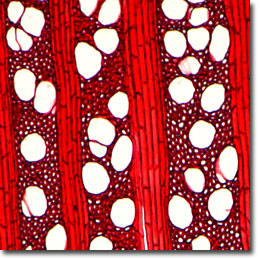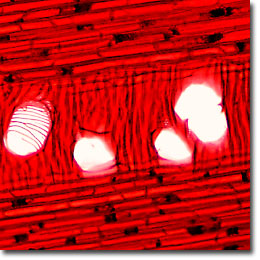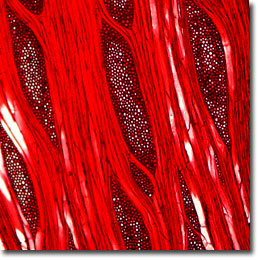The American Sycamore
The American Sycamore (Platanus occidentalis; often referred to as the Buttonwood or American Planetree) is a hardwood tree found primarily in the eastern United States and Canada. Average height of the American sycamore is between 130 and 165 feet and trunk diameters have a maximum diameter of 10 feet. The sapwood is whitish to light yellow or reddish brown in color, while the heartwood is light to dark brown or red in color, but is sometimes difficult to distinguish.

Cross Section

Radial Section

Tangential Section
This native hardwood tree is a long-lived specimen with lifetimes often exceeding 500 years, although many trees become hollow after 200-300 years. The species propagates by cuttings (very easily) and naturally, by seed. Optimal growth conditions are cool, deep alluvial soils, and the tree will not adapt to acidic or marshy soils. Sycamore wood is generally either quartered or flat-sawn and is widely used as a veneer for fruit and vegetable baskets and also indoor paneling. Other uses include sugar and flour barrels, cigar boxes, crates, pallets, and furniture.
As revealed in the digital images presented above, these stained (iron-alum hematoxylin and safranin) thin sections illustrate a diffuse and porous wood having simple perforation plates and terminal parenchyma. The rays are unstoried, homogeneous, and uniseriate. Vessels are numerous with inter-vessel pits being oval to orbicular and widely spaced. Fiber tracheids are moderately thick-walled and medium to very coarse in texture.